Play with Rousseau: 10 Activities, Lessons, and Play Ideas Inspired by Art
- Heather Newlin

- Feb 9, 2021
- 11 min read

I believe that the first time that you encounter a piece of art has a huge bearing on how you understand it for the rest of your life. It’s like you imprint yourself onto the art, and it imprints on you. And when you pay it a visit later, you may layer on more meaning, but the initial imprint defines how you feel about it.
So timing around introducing art is actually significant. There are some songs, movies, plays, sculptures, and paintings that will make sense after you’ve grown up a bit. And then there’s the work of Henri Rousseau.
Everything about the paintings by this self taught artist is appealing to young children. Just take a look at his complete works at henrirousseau.org, and you will see that the subjects are exciting and imaginatively brought to life. His technique has the joyful exuberance of someone who hasn’t had their artistic instincts pounded out by years of traditional art training.
Each image offers up the chance to dive into his imaginative world of jungles and monkeys and tigers. I knew they would be a perfect fit for the Arts Integrated Play that I’ve been setting up for Rémy. Toddlers should be able to really interact with Rousseau’s work and enjoy it.
So I set about creating an invitation to play, one that would balance imaginative jungle play opportunities with some of the other play types that fit nicely with a toddler’s development. Check out the video to see the prep and play in action, and keep reading for a step by step guide on how to create this Arts Integrated Play for your child:
Rousseau Jungle Box
I wanted to create a jungle inside a box because a) I had an antique box that Rémy has been itching to play with, and b) I liked the idea of him being able to practice opening and closing the box and working the latches.
Of course, to create this activity, you will need a box. If you don’t have an antique artist’s box handed down to you, then I recommend picking up one here, it looks like the perfect size.
The inside to the top will make an excellent Rousseau backdrop, and help bring the mini-jungle to life. I used the painting, The Tropics, but I could see Dream, or Tropical Forest with Apes and Snake being wonderful picks as well. Really, you can’t go wrong with any of his works inspired by jungle life.
With the backdrop in place, you will want to think about the jungle floor inside the box. I went with a terrarium moss because it’s natural, and I will probably repurpose it during a plant or garden project. But I could see faux turf filling the same roll nicely. The upside of the turf square is that it won’t shed little green moss pieces. Our box is definitely a shedder, and it’s pushed us to work on our broom and dustpan skills a little more ;)
I’ve populated our mini jungle with animals that came in the Prextex Safari set. I chose this set specifically for the booklet that comes along with the animals. I knew that I wanted Rémy to get in some matching play as he learns about all the animals, so having a booklet means that I can tear out pages instead of hunting down and printing off pictures of animals.
As soon as the box appeared on his play shelves, Rémy dove in and started matching the animals to the pictures. He is learning English and Swiss German, so we presented him with both names for the animals. It’s really amazing to watch him try out the different sounds in his mouth.
He also has brought the animals into other activities and forms of play. Every lunch, he tries to feed them a bit of the vegetables I am chopping up, and they have found their way over to the blocks a few times. His favorite seems to be the tiger, which I’ve found in all sorts of exotic places (like the book basket).
Rousseau Two Piece Puzzles
Whenever putting together Arts Integrated Play for a toddler, it’s important to provide examples of artwork. I typically print out and laminate the art. I want Rémy to be able to move them around, inspect them, and take them wherever he feels they are needed during play. This time around I opted for a slightly different approach.
Instead of giving him laminated artwork, I presented him with artwork puzzles. Each one has just two pieces that when placed together reveal a Rousseau painting. This level of puzzle is perfect for a young toddler. I knew this activity is something that he will be able to grow into and get a lot of use out of, so instead of lamination, I opted to mount the pictures.
I’ve created a learning resource that contains three pictures already split, and sized for 3.5in x 2.5in (8.89cm x 6.35cm) wood rectangles. To create the puzzles, first download and print out the puzzle pieces (I recommend card stock, but regular paper will work too). Then cut everything out. If your wood rectangles have rounded edges, as mine do, then you will need to accommodate for that as well.
To mount the pieces to the wood rectangles, I used Mod Podge. My love affair with the stuff has lasted for decades, and it was perfect once again. You will want to put an even layer on the wood, adhere the paper puzzle pieces, let dry thoroughly, and then apply a topcoat or two. Those topcoats are going to make these puzzle last!
Rémy is 19 months old, and just being introduced to puzzles like these, so I felt it was best to start him off with a single puzzle. I showed him all of the pieces in a basket and saw which painting he gravitated towards – it was Madrill in the Jungle. So I placed only that puzzle out on his play shelf. He has been playing with the pieces and at times gets to see the monkey all together.
As he grows, I will be able to increase the challenge of the activity by putting all three puzzles into a basket. He will need to match up the various puzzle pieces and then correctly place them together. Eventually, with these puzzles, and a few other art puzzles in the works, we will be able to play a memory game with all the pieces turned over.
Additional Rousseau Lessons and Activities
Jungle Research Project
Information Literacy
Guiding Question: What parts of a jungle are found in Rousseau’s paintings?
Benefits: Development of research skills
To answer this question, a child may weave through a whole series of additional questions:
What is a jungle? Where are jungles located? What plants and animals can be found in the jungle? Do all jungles look alike?
This is an activity that can meet each child where they are currently at. Rémy is far too young to be independently researching, but I have gathered books about jungles, and we will be reading through those together. That is the start of reseach!
There are many researching skills to be developed. For a quick brush up on the types of skills you want to introduce and reinforce, take a look at this post by Resilient Educator, or this one by Kathleen Morris.
With each research project (and there should be many, starting at a young age), you can highlight specific strategies that contribute to larger research skills. By the time your child hits middle school, they will know where to look for information, how to evaluate that information, and how to apply that information to pertinent questions.
And it all starts with simple questions about art.
Invitation to Create a Rousseau Painting
Art / Play
Guiding Question: How can we create a Rousseau painting out of plants?
Benefit: Introduction or practice ideas around composition.
Rousseau’s jungle paintings are densely filled with all sorts of wonderful plant life. Print out or pull up a few paintings, and have your child take a closer look at the different shades of green, the colors of fruits and flowers, and the shapes of leaves.
If your child is old enough, have a discussion about the composition of the paintings. To beef up on ideas around composition in art, check out The Virtual Instructor, as he gives a solid overview.
Ask your child to think about how Rousseau has arranged all the plants? Is there visual balance? How did he achieve that balance? Let the child know that as they will be creating their own version of a jungle scene, they should consider these ideas around composition.
But even if your child isn’t old enough to grasp all of these complex ideas, the activity is a great way for them to create!
To set up the activity, first create a base landscape. I used watercolor to create a sky, sun, and green background for the plants. If your child is older, they will be able to help out with this step.
I then framed the pictures, to make them feel like important works at a museum, and to anchor the watercolor background. But you could easily skip this step and tape down the pictures.
Along with the framed paintings, you will provide your child with a basket full of plant clippings. I walked around our yard and clipped off as many different types of plants as possible. I also placed books with Rousseau’s paintings by the frames so that Rémy could reference them and get inspired.
Creating Imaginary Landscapes
Geography / Art
Guiding Question: What types of imaginary landscapes can I create?
Benefit: Stronger geographic vocabulary, development of planning skills
Rousseau’s most famous works are of vibrant jungle scenes; despite the fact he had never left France. He drew his knowledge of plants and animals from the Paris Botanical Gardens, and from illustrated books. Everything else was left up to his imagination. Share Rousseau’s story with your child.
Then, have your child do a brainstorm around the different types of landscapes they may know, and the major elements within. Mountains, beach, forest, fields – anything they can think of. Then you may want to introduce a few new vocabulary words into the mix.
Once your list has been created, have your child pick elements that they would want in their imaginary landscape. Help them find visual references for the elements that they selected, and perhaps create a little mood board with inspiration images. Then they are set to create their own informed imaginary landscape, just like Rousseau.
Painting Story
Writing
Guiding Question: What story does Rousseau’s painting tell?
Benefit: Imaginative prompt
Print out or pull up a few paintings by Rousseau, and let your child examine each one carefully before having a discussion about what they see.
Ask them to pick one picture to serve as a writing prompt. They will then write a story about the picture, or inspired by the picture. If the child is too young to write, have them dictate the story to you. You can write down their exact words, and then read it back to them.
If your child is elementary age or older, they should be prompted to work through a writing process, where they brainstorm, draft, revise, edit, and publish their work. Even children who are just learning to write, can move through this iterative process. The entire project should probably take a few sessions.
Rousseau’s Soundtrack
Music
Guiding Question: What songs should accompany each Rousseau painting?
Benefit: Introduction to or practice for ideas and vocabulary around tone. Abstract and critical thinking skill development.
You can do this one of two ways:
1) Print out or pull up a couple paintings. Have your child take a close look at the paintings, generating descriptive words for each one. These words will help define the tone of the painting. You may also take this opportunity to provide a couple new vocabulary words.
Then provide your child with a pre-created playlist that contains a variety of songs. Have your child use the list of descriptive words to help them pick out songs to accompany each painting. You may need to model this process a couple times before it takes root.
2) Present the paintings and the playlist to your child, allowing them to flow through their own critical thinking process in order to land at a decision about what songs to pick. Follow up with asking your child to explain why the song was chosen, and how it relates to the painting.
This is a more constructivist, exploratory approach, which may work well for older children; however, younger children will likely need the support that the first approach provides.
Rousseau Photo Shoot
Art
Guiding Question: How can we create a photograph inspired by the works of Rousseau?
Benefits: Introduction or practice of ideas and vocabulary around composition and perspective.
Toy photography is an amazing way to introduce all sorts of fun art concepts, and help children think about how pictures tell stories. By having them reference Rousseau, you will add a dash of problem solving into the mix, as they will have to figure out how to visually create a jungle environment.
After they have finished their photo shoot, sit down together and take a closer look at the pictures. You can have them talk about their creative process, explain some of the decisions they made, and consider what would have made the task easier. The important thing is that you get them talking about their photography.
Jungle Preservation
Science / Social Studies
Guiding Question: What can we do to protect our jungles and rainforests?
Benefits: Early awareness of conservation work, ideas around ecological systems, climate change, youth activism
Although jungles and rainforests are not identical, they are very similar and often get lumped together. It may be fun to start looking at the similarities and differences between the two.
One thing they both have in common is their importance in maintaining a balance within our global environment, and their continual destruction. Almost 90% of the rainforest in West Africa’s costal region has been destroyed already. The rate of deforestation in the Congo Basin has doubled since 1990. That’s scary.
I’m a believer that we should start introducing big conversations early; the ones that may be a little bit scary, and somewhat uncomfortable. Racism, consent, gender identity, climate change – these may be difficult for a child to completely wrap their brain around, but ignoring the issues means that there is a learning vacuum. And that vacuum will ultimately be filled; it’s just a matter of how much gentle, knowledgeable guidance will be part of that.
There are many sites that approach the idea of climate change, deforestation, and conservation for kids. Check out a couple:
Tips on how to talk to your child about climate change by Rainforest Alliance
Ideas to present on how to preserve rainforests, also by Rainforest Alliance
More information on climate change by NASA’s Climate Kids
Information about rainforests from National Geographic Kids
After gaining a little background knowledge, it’s time to sit down and make your family’s conservation plan. What are the things you and your kids can be doing to protect against the destruction of jungles and rainforests? It’s important to start small and personal, and then as children become older, they can begin making bigger plans.
Mini Ecosystems Terrarium
Science
Guiding Question: What are the plants inside Rousseau’s jungle?
Benefits: Recognizing the plants and animals that are part of a jungle ecosystem
Rémy and I have not reached the ecosystem part of our program yet, but I’m quite excited for when we get there. My hope is to create miniature ecosystem arrangements in terrariums. For a great intro into the world of terrarium ecosystems, check out the post at Terrarium Tribe.
To create one, you will need a terrarium, or wardian case, for each ecosystem. If you are looking for a reasonably priced one that has clean modern lines, Ikea makes just the one. Or you can go with something a bit more traditional. Then you and your child will need to research what plants you want to have populate your ecosystem.
This is one of those activities that will make available so many lessons in biology and in practical life activities. I plan to touch on plant anatomy, cycles of growth, weather, and water systems. Will I also add some cute wood animals into the mix… you never know.
When we are creating a jungle terrarium, I will be pulling out all the Rousseau paintings, and we will be using them as inspiration into our research and construction.
More Rousseau Fun
As you can see, Rousseau’s a great launching point for multiple units of learning. I’ve poked around and found even more ideas, and collected them on this Pinterest board.
I would love to keep collecting lessons and activities that are inspired by Rousseau, so if you have any great ideas, please leave a note in the comments, or email me. Make sure to add pics!








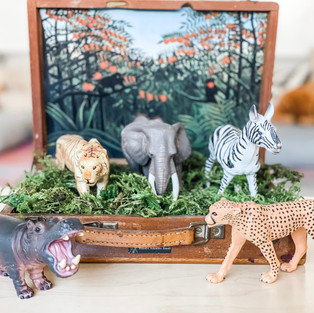


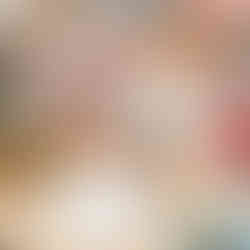

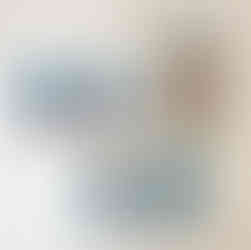


















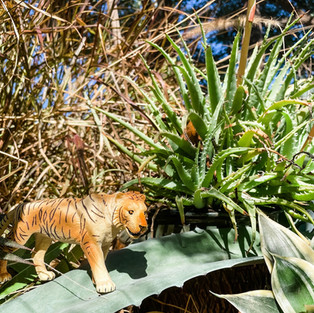
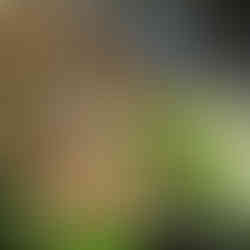






Comments